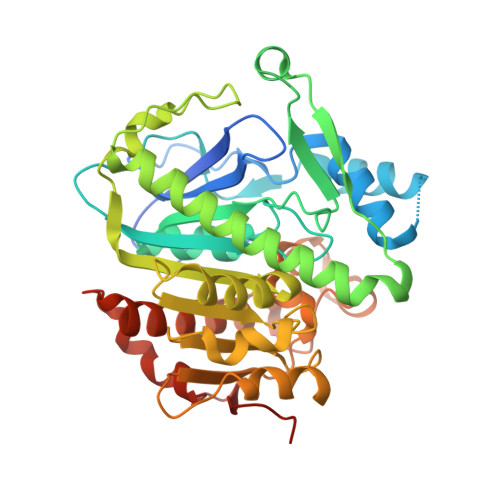Structure-Guided Discovery of Novel, Potent, and Orally Bioavailable Inhibitors of Lipoprotein-Associated Phospholipase A2.
Liu, Q., Huang, F., Yuan, X., Wang, K., Zou, Y., Shen, J., Xu, Y.(2017) J Med Chem 60: 10231-10244
- PubMed: 29193967
- DOI: https://doi.org/10.1021/acs.jmedchem.7b01530
- Primary Citation of Related Structures:
5YE7, 5YE8, 5YE9, 5YEA - PubMed Abstract:
Lipoprotein-associated phospholipase A2 (Lp-PLA2) is a promising therapeutic target for atherosclerosis, Alzheimer's disease, and diabetic macular edema. Here we report the identification of novel sulfonamide scaffold Lp-PLA2 inhibitors derived from a relatively weak fragment. Similarity searching on this fragment followed by molecular docking leads to the discovery of a micromolar inhibitor with a 300-fold potency improvement. Subsequently, by the application of a structure-guided design strategy, a successful hit-to-lead optimization was achieved and a number of Lp-PLA2 inhibitors with single-digit nanomolar potency were obtained. After preliminary evaluation of the properties of drug-likeness in vitro and in vivo, compound 37 stands out from this congeneric series of inhibitors for good inhibitory activity and favorable oral bioavailability in male Sprague-Dawley rats, providing a quality candidate for further development. The present study thus clearly demonstrates the power and advantage of integrally employing fragment screening, crystal structures determination, virtual screening, and medicinal chemistry in an efficient lead discovery project, providing a good example for structure-based drug design.
Organizational Affiliation:
School of Life Science and Technology, ShanghaiTech University , Shanghai 200031, China.















